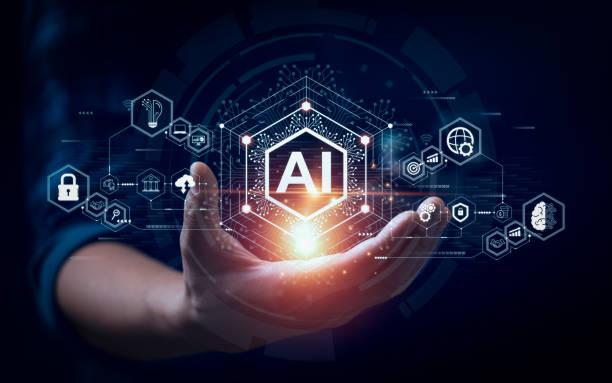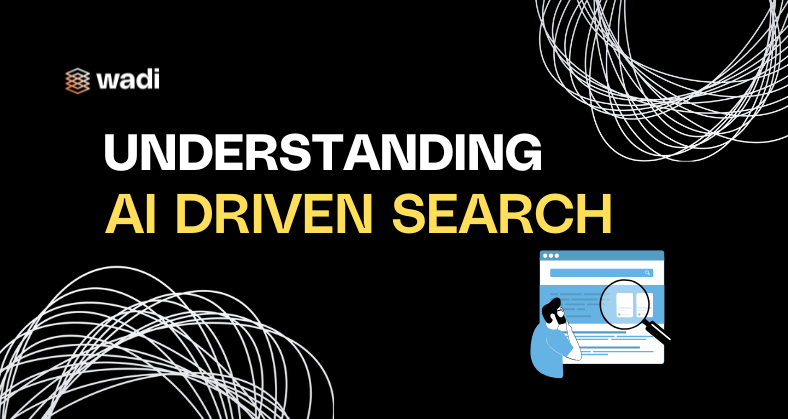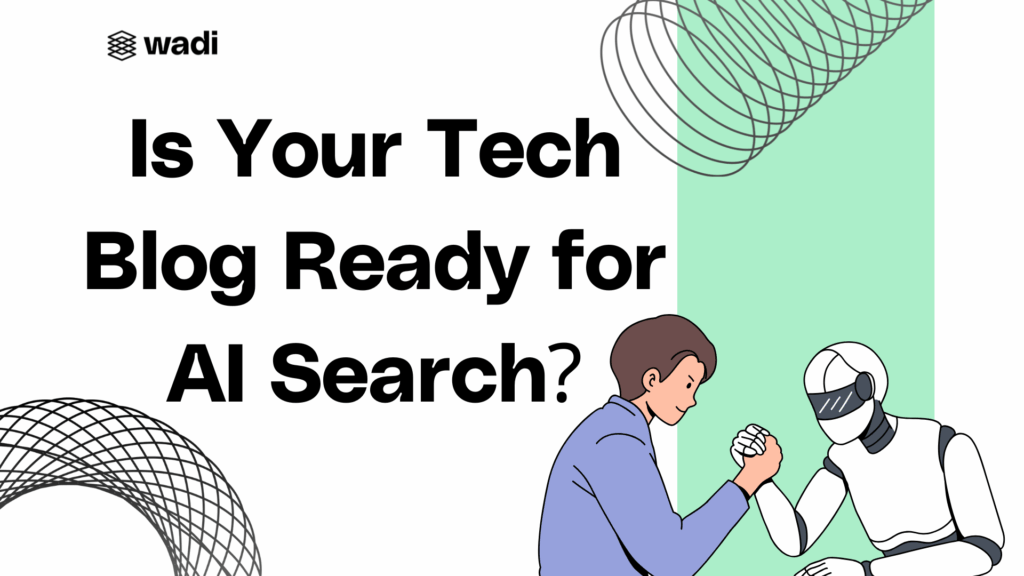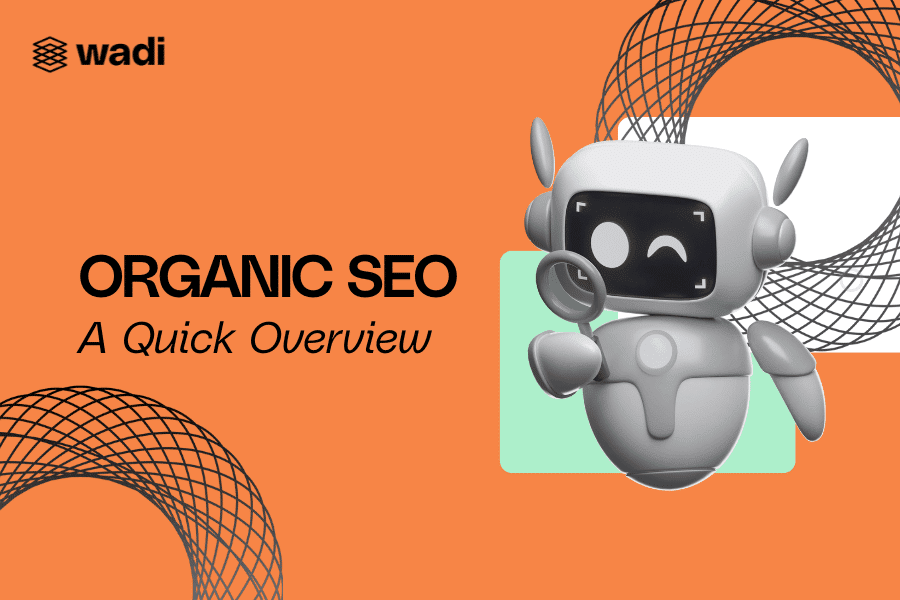Table of Contents
ToggleIntroduction
Artificial Intelligence (AI) has revolutionized the way we interact with technology, redefining how search engines operate and how users find information. AI-driven search has transformed traditional methods of retrieving, presenting, and consuming content. This new approach leverages sophisticated machine-learning models to deliver results, significantly impacting the digital landscape for businesses and users alike.
Unlike traditional search engines, which often struggle to grasp the nuances of user intent, AI-powered search systems excel at interpreting complex queries, understanding subtle contexts, and adapting to individual preferences. As these systems continue to evolve, they are reshaping how information is accessed, making searches more intuitive and user-centric than ever before. The implications for businesses are profound, with AI-driven search demanding a fresh perspective on optimization strategies and content creation.
In this article, we’ll explore the core principles of AI-driven search, delve into its impact on search engine dynamics, and provide actionable insights for businesses aiming to optimize their content effectively in this ever-evolving landscape. Whether you’re a seasoned digital marketer or a curious observer, this guide will equip you with the knowledge to navigate and leverage AI to your advantage.
What You Will Learn?
- The differences between traditional search engines and AI-driven search.
- How AI collects, analyzes, and processes data to enhance search accuracy.
- The principles of Generative Engine Optimization (GEO) and how businesses can implement them.
- Best practices for AI-driven content and common strategy mistakes to avoid
Evolution of Search: From Traditional Methods to AI-Driven Innovations

Traditional Search Engines
Web crawlers scan and index content to build a database of pages. When a query is submitted, algorithms assess factors like keywords, content relevance, user engagement, backlinks, and site authority to rank results. These core methods are central to search engine optimization (SEO) and, while algorithms have evolved to better understand user intent, they still form the foundation of how search results are delivered.

AI-Driven Search Engines
AI search engines go beyond traditional models by using advanced capabilities that change how information is retrieved and presented. Unlike traditional search engines, AI search engines understand natural language queries in full, interpreting nuances like tone, implied meaning, and user expectations. This enables them to deliver results that feel more intuitive and contextually relevant. Additionally, AI search engines personalize results by analyzing user history, preferences, and behaviors, tailoring the search experience to each individual. For example, two users searching for “best laptops” might receive different results based on their browsing history and interests. AI search engines also adapt dynamically by learning from user interactions in real time, refining search results and recommendations over time to improve accuracy and relevance.
These search engines gather and process data from a wide range of sources, including user interactions, social media activity, and real-time inputs such as voice commands and visual searches. By analyzing this data, AI search engines offer highly personalized results, transforming them from simple repositories of information into dynamic tools for discovery. This shift marks a significant evolution in how search engines process and present information to users.
Pro Tips:
- Diversify Content for Multimodal Search: Optimize content for text, images, video, and voice to engage users across different search formats.
- Focus on conversational keywords and optimize for natural language queries to meet AI’s ability to understand context.
How Can a Business Optimize for AI?
Optimizing for AI requires a shift toward Generative Engine Optimization (GEO). Here are key strategies:
- Focus on Conversational Keywords: AI-driven search prioritizes natural language, meaning businesses must align their content with how people naturally speak and ask questions. Incorporate long-tail keywords and phrases that reflect conversational patterns, such as those used in voice searches or informal queries. For example, instead of “best laptops 2025,” consider “What are the best laptops to buy in 2025?”
- Create High-Quality, Evergreen Content: AI thrives on content that remains relevant over time. Focus on addressing timeless topics that provide value to readers long after publication. Pair this with regular updates to ensure your content reflects the latest trends and insights. For instance, a guide to “top social media strategies” could include ongoing updates to align with evolving platforms and algorithms.
- Leverage Structured Data: Schema markup is crucial for helping AI understand the context, hierarchy, and meaning of your content. By embedding structured data, you can ensure that search engines display your content in rich snippets, knowledge panels, or other enhanced formats that attract user attention. This includes tagging FAQs, product reviews, and videos for better visibility.
- Optimize for Multimodal Search: As search becomes increasingly multimodal, businesses must diversify their content formats. Incorporate high-quality visuals, informative videos, and voice-friendly scripts. For example, creating video explainers alongside blog posts ensures content is accessible to users conducting visual or voice-based searches. Don’t forget to use descriptive alt text for images to enhance searchability.
- Use AI Tools for Insights: AI tools can analyze vast datasets to identify emerging trends, user behaviors, and performance metrics. Use these insights to refine your strategy.
- Enhance User Experience: AI emphasizes a user-centric design. Ensure your site is mobile-friendly, fast-loading, and easy to navigate. Features like chatbot assistants or personalized content recommendations can elevate user engagement and reduce bounce rates.
Best Practices
- Use AI as a Creative Tool: Leverage AI-driven tools to brainstorm or outline ideas
- Visual Content Creation: AI-powered tools like design generators or video editing software can help create visual content such as graphics, infographics, and videos.
Mistakes to Avoid:
- Over-Reliance on AI: Don’t depend entirely on AI for content. It can lack originality and emotional depth, so human creativity is essential for authenticity.
- Ignoring Data Privacy: Ensure compliance with data protection laws (e.g., GDPR, CCPA) and be transparent about how user data is used to build trust.
- Underestimating Long-Term Strategy: Focus on long-term goals, not just short-term gains. Align AI content with broader business strategies for sustainable growth.
Conclusion
AI-driven search represents a monumental shift in how users find and interact with information. By prioritizing user intent, personalization, and dynamic adaptability, AI-powered systems are setting new standards for search engines and digital experiences. For businesses, this evolution demands a rethinking of traditional strategies, with a focus on leveraging Generative Engine Optimization (GEO) and embracing AI as a tool in content creation and strategy.
The key to thriving in this new landscape lies in balancing the technical capabilities of AI with the creativity and nuance of human expertise. By aligning content with conversational queries, optimizing for multimodal searches, and prioritizing user engagement, businesses can stay ahead of the curve. At the same time, maintaining a focus on ethical practices, data privacy, and emotional resonance ensures a credible and trustworthy online presence.
As AI continues to evolve, so too must our strategies and tools. Staying informed about emerging trends and adapting to technological advancements will be crucial for long-term success. By integrating these principles, businesses can not only navigate the challenges of AI-driven search but also unlock its immense potential to connect with audiences in meaningful ways.
Key Takeaways
- AI-driven search prioritizes user intent, context, and personalization.
- Optimize for conversational queries and multimodal searches.
- Leverage AI tools to enhance, not replace, human expertise.
Frequently Asked Questions (FAQs)
What is AI-driven search?
AI-driven search is two-fold: searches done on AI platforms and leveraging AI as a tool in content creation. First, it delivers search results by focusing on user intent and analyzing data from sources like search behavior, social media trends, and real-time inputs. Additionally, AI can be used as a tool to aid in content creation by generating ideas and streamlining production.
How does AI-driven search differ from traditional search?
Unlike traditional search, which primarily relies on keyword matching and static algorithms, AI-driven search interprets natural language and dynamically tailors results based on user intent, context, and real-time interactions. For example, while a traditional search might provide general links, AI-driven systems can offer predictive suggestions and immediate answers to conversational queries.
How can I optimize for AI-driven search?
To optimize for AI search engines, focus on integrating conversational keywords that mirror natural speech patterns. Use structured data to make your content easily interpretable by AI systems, and ensure high-quality, multimodal content, including text, images, and video, to engage a diverse audience. Additionally, prioritize user experience by addressing intent and creating solutions-oriented content.
Are there risks to using AI-generated content?
Yes, over-reliance on AI can lead to generic outputs or inaccuracies. While AI can enhance efficiency, it lacks the human touch needed for emotional resonance and nuanced storytelling. Always review, refine, and fact-check AI-generated content, it should only be used as a tool, and never to replace a human author.
Are you planning your new website? Do you have a qualified SEO company to plan your site migration hand in hand with you? We at WadiDigital, B2B Digital Marketing Agency offer a free SEO review! Don’t miss this amazing opportunity and contact us.






